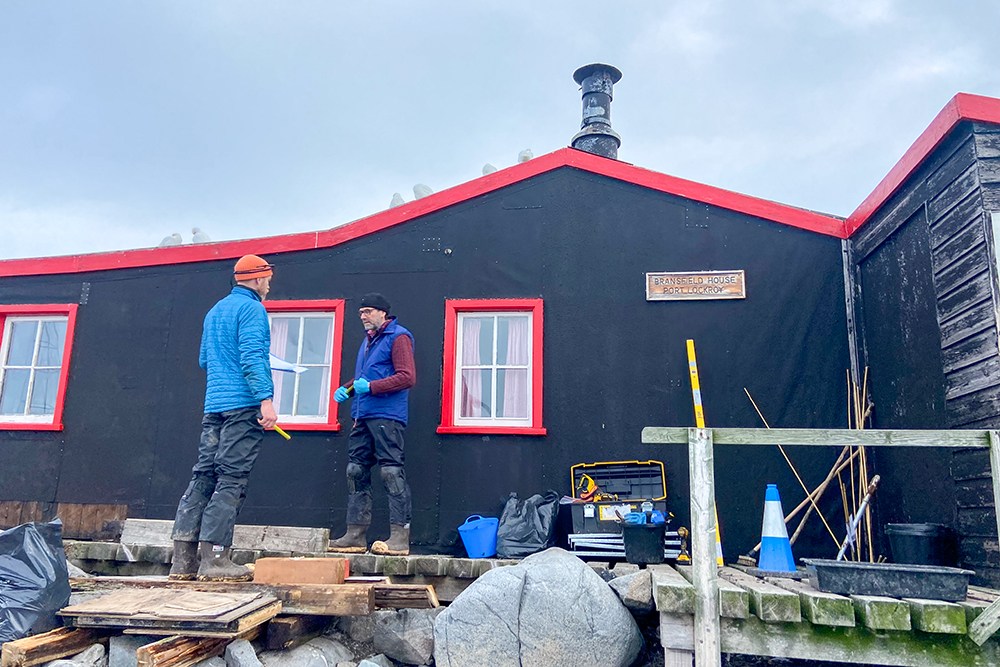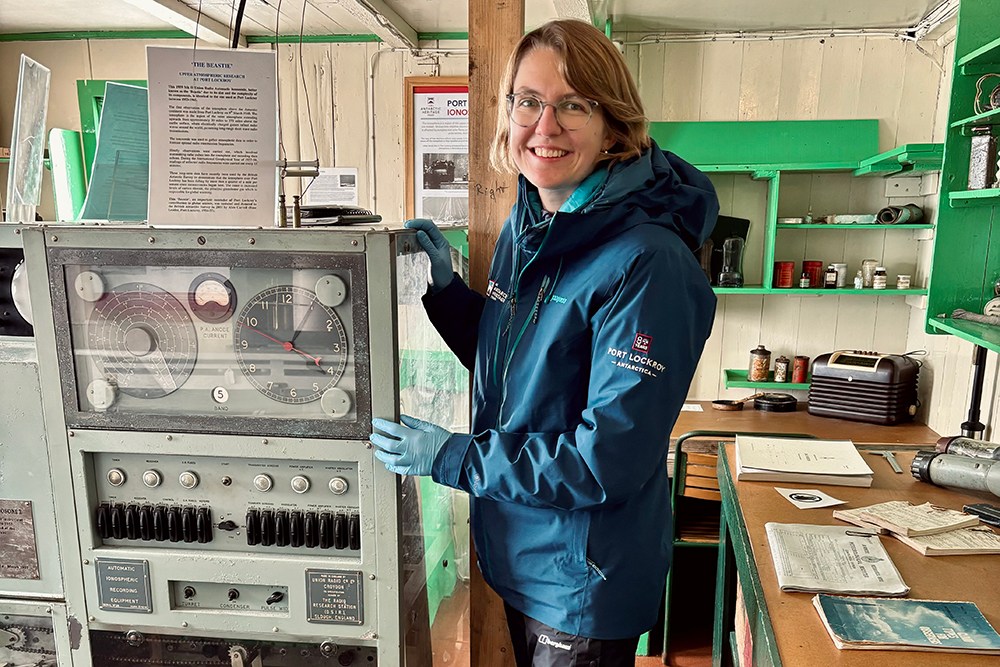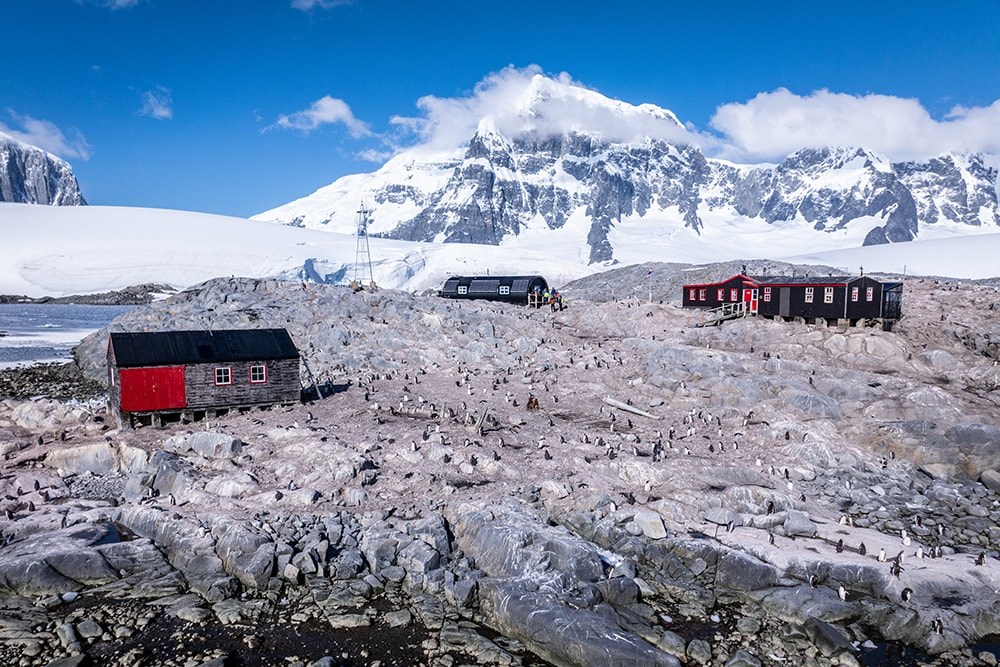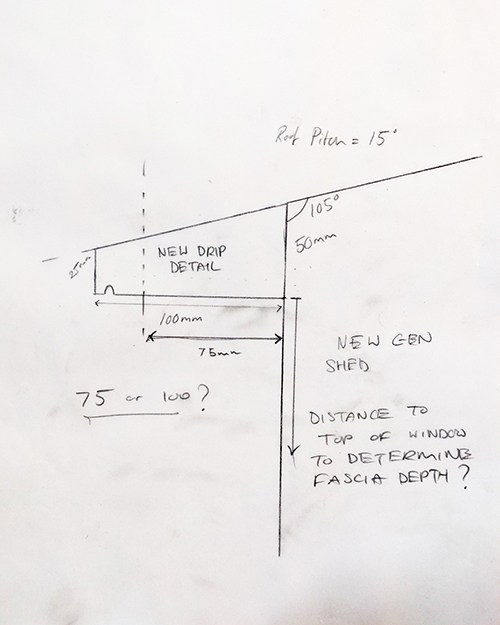Strength beneath the surface: our three-year mission to protect Port Lockroy
23/10/2025
As we begin the most significant phase of conservation work at Port Lockroy since 1996, our Head of Buildings and Conservation, Ruth Mullett, takes us behind the scenes of this ambitious project.
Last season, our team, which had been working on partially replacing one of the structural floor bearers beneath the ionospheric room in Bransfield House at Port Lockroy, discovered that the structural problems there were far more extensive than we had previously understood.
The team carried out some outstanding investigative work to determine exactly what was happening and which floor bearers were affected. The problem is multifaceted. We’ve found that the floor structure can no longer support the weight being placed on it. We believe this is partly due to increased snow loading – snowfall is becoming heavier and more frequent as the climate warms – but also because of some particularly heavy artefacts in the room, notably “the Beastie”, which weighs over half a tonne. That’s a significant dead load in the centre of the space.

Carpenter Jim and Graham at work on Bransfield House last season (UKAHT/Dale Ellis)
We’re also seeing extensive rot in the timbers on the exterior face – both in the floor joists and in the structural timbers that sit against the outside walls. We think this is being exacerbated by increased moisture and the fact that the buildings were never fitted with any system to divert water away from the walls. As a result, rain runs directly down the sides of the buildings and soaks into the timbers, causing decay.
It’s a major issue to fix, so we’ve planned a three-year programme of repairs and improvements, focused particularly on the ionospheric room.
Year one: stabilisation and preparation
This first year, beginning this season, is about stabilising the existing structure and carefully opening up the floor to assess the damage. Because access beneath the floor is extremely limited – it’s very close to the rock bed – we have to work from inside the room.
The ionospheric room, as anyone who’s visited Port Lockroy will know, is full of incredible artefacts that tell the story of the research that took place there. Moving and packing these items is a major task in itself. Amanda from the Port Lockroy team will play a key role in this, carefully packing up the artefacts early in the season.
Our artefacts advisor has developed a detailed methodology for packing, labelling and storing each artefact so everything can be returned to its exact position in two years. Smaller artefacts will be removed before our carpenters arrive on site in January, after which the team will begin dismantling the built-in furniture – desks that run along two exterior walls of the room – to access the joists and flooring below.

The 2024/25 museum manager, Laura, next to the Beastie (UKAHT/Laura Büllesbach)
Each piece will be meticulously labelled so it can be reassembled later exactly as it was. One of our carpenters, Dan, will also take on the complex task of deconstructing the Beastie, the large ionosonde used for ionospheric research in the 1950s, particularly during the International Geophysical Year.
Dan has researched how it was originally built so he can safely dismantle and move it. When reinstated, we’ll ensure it’s properly supported and that its load is transferred to the ground.
Once that’s complete, the team can start opening up sections of the floor, reinforcing the structure, and installing temporary props. Our structural engineers are developing a detailed programme of repairs to ensure the building is fit for the future and can cope with increased loads. This season will also serve to test and refine the repair methods before full implementation next year.
Year two: structural repairs
Year two will focus on carrying out the actual structural repairs. Because we can’t afford any missteps, the work this season will help us perfect the approach in advance.
The main repairs will likely involve adding more timbers to strengthen the floor and increase its load-bearing capacity. We’ll also strengthen the roof. It’s a very low-pitched, flat roof with a wide span, so it struggles under snow load. Working with our engineers, we’re developing a plan to reinforce it so it can better withstand future conditions.

There are big plans afoot for Bransfield House (right) (UKAHT/Michael Duff)
Year three: finishing and reinstatement
The final year will involve making good all the work – re-felting the roof and walls, reinstalling the artefacts and furniture, and ensuring the building looks as it did originally but is much better able to cope with the changing Antarctic climate.
Wider climate adaptation work
Alongside the Bransfield House project, we’re also carrying out other works to help the buildings cope with increasing moisture from rain and snowmelt. None of the historic Antarctic buildings were constructed with gutters – so-called rainwater goods – because those systems would simply blow away in the harsh conditions.
Instead, we’re installing drips along the eaves and windows to direct water away from the walls. We trialled this approach two years ago and found it very effective, so now we’re rolling it out more widely. This season, we’ll add drips to the eaves of the generator shed and to the generator shed windows before gradually extending the work across the site in future years.

Carpenter Jim's plans for the rainwater goods (UKAHT/Jim Brearley-Ratcliffe)
The drips themselves are a small timber wedge added beneath the eaves, with roofing felt run over the top. Visually, the change is minimal, but it makes a significant difference in diverting water away from the timber walls.
We also have big plans for the historic windows in Bransfield House, but I will talk more about that in another blog post.
Continuing to welcome visitors
While conservation work is ongoing, the ionospherics room will remain closed for safety for the next two seasons. However, visitors can still explore it virtually through the UKAHT website, and the museum will remain open throughout the season.
“Through careful planning, craftsmanship and patience, we’re preserving not just the windows – but the view into Antarctic history they frame.” – Ruth Mullett, Head of Buildings and Conservation, UKAHT
This period of work also provides a valuable opportunity to study and share the stories connected to the site. As objects are carefully packed and unpacked, the team is learning even more about the history and science of Port Lockroy – knowledge that will be shared through our public engagement programmes.
Ruth Mullett, Head of Buildings and Conservation
If you love a place, protect it
Eighty years in Antarctica have left their mark on this beloved site. Now, Port Lockroy urgently needs restoration to protect its future.
Please donate today.
How your donation will help
We’re seeing more frequent and intense precipitation, both as snow and rain. The historic buildings at Port Lockroy were never designed to withstand this. Meltwater is eroding foundations and damaging walls; the warmer, wetter conditions are causing rot and algae on timber; and internally, this is speeding up the deterioration of artefacts.
In short, the changing climate is not a distant threat; it’s a present-day challenge.
What conservation plans do we have?
- Pack and relocate artefacts to a safe space
- Complete extensive structural works, replacing and strengthening historic floor timbers
- Paint and protect the iconic boatshed
- Replace wooden windows
- Re-felt areas of the historic roof
- Install a climate change mitigation system to prevent water runoff from damaging exterior timbers
What will this work do?
- Secure the immediate safety of Port Lockroy
- Provide long-term protection against climate and environmental damage
- Keep this unique site open as a source of inspiration and connection to Antarctica
Other ways to donate
Please contact our Head of Development, Camilla Johns, via:
Email: camilla.johns@ukaht.org
Post: UK Antarctic Heritage Trust, High Cross, Madingley Road, Cambridge CB3 0ET, UK
Phone: +44 (0)1223 355 049

